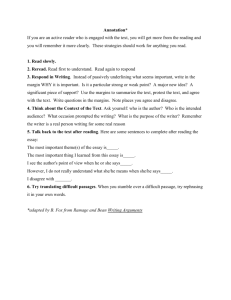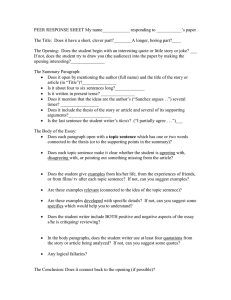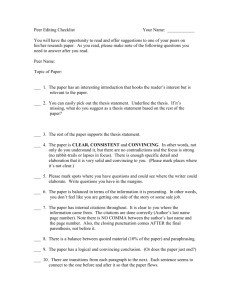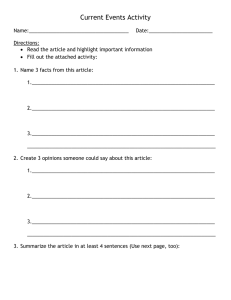How to Annotate a Text
advertisement
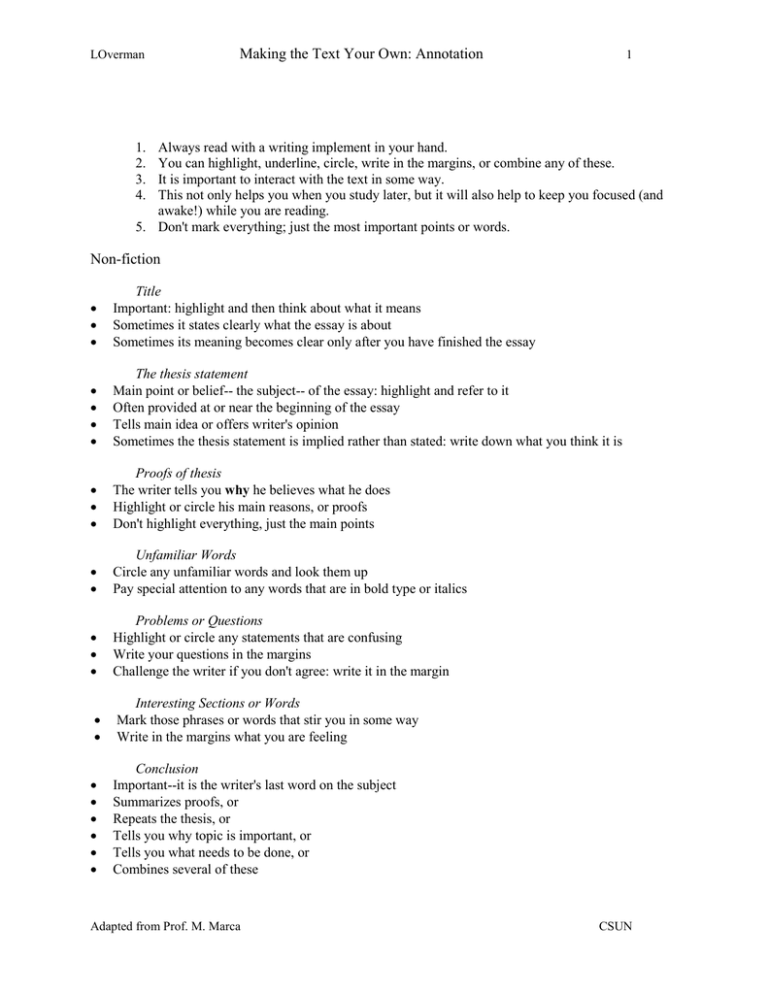
LOverman Making the Text Your Own: Annotation 1 1. 2. 3. 4. Always read with a writing implement in your hand. You can highlight, underline, circle, write in the margins, or combine any of these. It is important to interact with the text in some way. This not only helps you when you study later, but it will also help to keep you focused (and awake!) while you are reading. 5. Don't mark everything; just the most important points or words. Non-fiction Title Important: highlight and then think about what it means Sometimes it states clearly what the essay is about Sometimes its meaning becomes clear only after you have finished the essay The thesis statement Main point or belief-- the subject-- of the essay: highlight and refer to it Often provided at or near the beginning of the essay Tells main idea or offers writer's opinion Sometimes the thesis statement is implied rather than stated: write down what you think it is Proofs of thesis The writer tells you why he believes what he does Highlight or circle his main reasons, or proofs Don't highlight everything, just the main points Unfamiliar Words Circle any unfamiliar words and look them up Pay special attention to any words that are in bold type or italics Problems or Questions Highlight or circle any statements that are confusing Write your questions in the margins Challenge the writer if you don't agree: write it in the margin Interesting Sections or Words Mark those phrases or words that stir you in some way Write in the margins what you are feeling Conclusion Important--it is the writer's last word on the subject Summarizes proofs, or Repeats the thesis, or Tells you why topic is important, or Tells you what needs to be done, or Combines several of these Adapted from Prof. M. Marca CSUN LOverman Making the Text Your Own: Annotation 2 Fiction Title Important: highlight and then consider what it means Ask yourself if it references another story/idea Sometimes deliberately meant to get you guessing Characters Mark main characters and brief descriptions Note if one of the characters is the narrator Mark important remarks or thoughts of main characters Note inconsistencies or surprises in the margins Plot Series of events in story Mark each time another important event happens Write in margins any surprises or puzzlements Setting (time and place of story) Mark description of main setting--place Clues to time period of story Words that convey mood--dark, sunny, stormy etc Style Sentence structure--simple or complex Images and symbolism Word choice Theme What is the main idea or message? How effective is the writer in conveying that message? Reading styles: Some elements may be noted only on the second "sweep" through the story. Often you must come to the end before all of the pieces fall into place. Adapted from Prof. M. Marca CSUN
